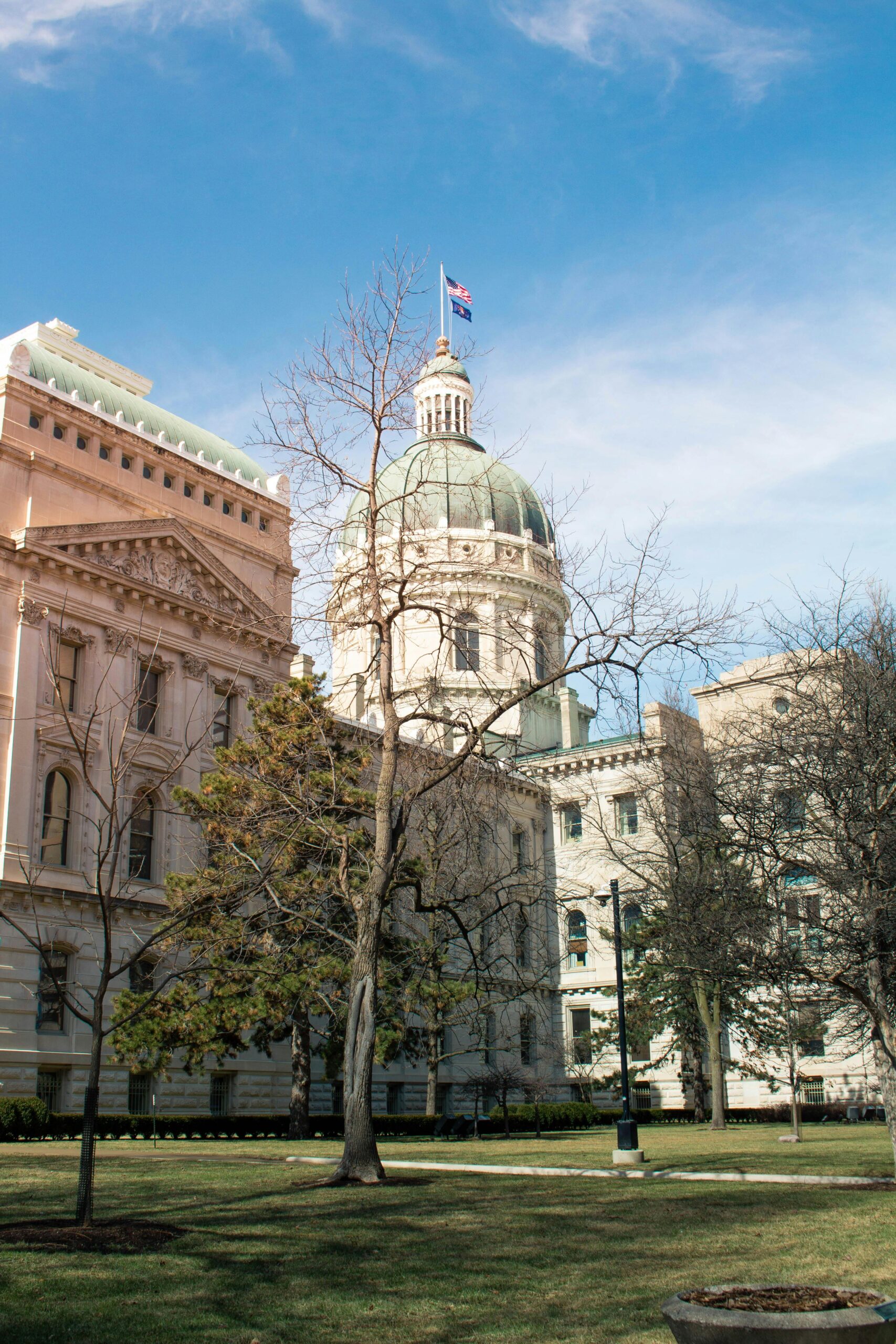Are you confused about the Indiana Buffer Zone Law Injunction and how it might affect you? You’re not alone! This recent legal development has raised many questions among residents and businesses alike. The Indiana Buffer Zone Law, which aims to establish specific zones around certain properties, has stirred up a lot of debates and concerns. Knowing the implications of the injunction is crucial for anyone impacted by this law. What does this mean for property owners? How does it affect local businesses and the community? In this post, we will dive deep into the Indiana Buffer Zone Law Injunction, providing you with essential insights and updates. You’ll learn why understanding this law is more important than ever, especially with the ongoing discussions surrounding zoning regulations and property rights. Whether you’re a homeowner, a business owner, or just a curious citizen, knowing the ins and outs of this injunction could save you from potential legal troubles. Stay tuned as we unpack the complexities of the Indiana Buffer Zone Law and what you need to do now to stay informed and protected! Don’t miss out on this vital information that could impact your neighborhood and beyond!
Understanding the Indiana Buffer Zone Law: Key Implications and Recent Developments You Can’t Ignore
Understanding the Indiana Buffer Zone Law: Key Implications and Recent Developments You Can’t Ignore
In recent years, the Indiana Buffer Zone Law has become a hot topic among legal circles and community members alike. Many people are still unclear about what this law really means and how it affects their lives. The law’s implications are not just limited to one area. It stretches across various sectors, making it crucial to understand its provisions. The recent developments surrounding the Indiana Buffer Zone Law injunction are particularly noteworthy, and they have raised serious questions about the law’s enforcement and application.
What is the Indiana Buffer Zone Law?
The Indiana Buffer Zone Law was established to create protected zones around certain facilities, like schools, parks, and places of worship. These buffer zones are meant to protect individuals from potential harm or disruption. It came into play after numerous incidents where individuals faced unwanted confrontations or disturbances. Here are some key components of the law:
- Defined Boundaries: The law specifies the distance that must be maintained from protected areas.
- Prohibited Activities: Certain actions, like protests and demonstrations, are restricted within these zones.
- Enforcement Mechanisms: Local law enforcement agencies are given the authority to enforce these boundaries.
Key Implications of the Indiana Buffer Zone Law
The implications of this law are broad and far-reaching. For instance, many people, including activists and community organizers, have found themselves navigating a complex legal landscape. Here are some major implications:
- Restrictions on Free Speech: Critics argue that the law infringes upon First Amendment rights by limiting where individuals can express their views.
- Legal Risks: Individuals who violate the buffer zone can face fines or other legal repercussions.
- Impact on Community Events: Local events, such as rallies or public demonstrations, may need to be restructured to comply with the law.
Recent Developments: Indiana Buffer Zone Law Injunction
Recently, there have been notable developments regarding the enforcement of the Indiana Buffer Zone Law. Various groups have challenged the law in court, claiming it violates constitutional rights. In some cases, judges have issued injunctions against the law’s enforcement, leading to confusion and uncertainty. Here are some important points regarding these legal challenges:
- Court Rulings: Some courts have ruled in favor of plaintiffs, temporarily halting the law’s enforcement.
- Public Response: Community reactions have been mixed, with some supporting the injunction while others believe it undermines the law’s purpose.
- Future Implications: Ongoing litigation may lead to significant changes in how the law is applied and enforced.
What You Need to Know Now
If you are living in Indiana or you are involved in activities that may be affected by the buffer zone law, it’s crucial to stay informed. Here are some steps you can take to navigate the current legal environment:
- Stay Updated: Follow local news outlets for updates on legal challenges and changes to the law.
- Know Your Rights: Familiarize yourself with your rights under the First Amendment and how they relate to the buffer zone law.
- Consult Legal Experts: If you find yourself in a situation where the buffer zone law may apply, consider speaking with a legal expert who can provide guidance specific to your case.
Key Takeaways
- The Indiana Buffer Zone Law was created to protect certain public spaces, but it has raised significant legal and ethical questions.
- Recent injunctions have brought uncertainty to the law’s enforcement, creating a complex legal landscape for individuals and organizations.
- Staying informed about legal changes and understanding your rights is crucial in this evolving situation.
In summary, the Indiana Buffer Zone Law and its recent developments are not something to overlook. Whether you’re an activist, community organizer, or merely a concerned citizen, understanding the implications of this law is vital. Legal challenges continue to shape its future, and the ongoing debates will undoubtedly influence how these protections are applied in Indiana. Keeping abreast of changes and knowing your rights will empower you to navigate this complex landscape effectively.
The Impact of the Indiana Buffer Zone Law Injunction: What It Means for Local Communities and Businesses
The Indiana Buffer Zone Law Injunction is a significant legal development that has stirred up conversations across the state. It affects not just local communities but also businesses, creating ripples in how regulations are viewed and enforced. This article digs into the implications of this injunction and what it means for residents, business owners, and law practitioners in Indiana.
What is the Indiana Buffer Zone Law?
The Indiana Buffer Zone Law was designed to create a physical space around certain facilities, especially those that might have a negative environmental impact. This law was aimed at protecting nearby communities from potential hazards. It included provisions that mandated minimum distances between such facilities and residential areas or schools. However, this law faced legal challenges, leading to the injunction that has now put it on hold.
The Injunction Explained
An injunction is a court order that either compels a party to do something or prohibits them from doing something. In this case, the injunction halted the enforcement of the Indiana Buffer Zone Law. This means that the rules that were meant to protect neighborhoods and businesses are no longer in effect, at least for now.
Key points about the injunction include:
- Temporary Nature: The injunction is not permanent; it’s a pause while legal arguments are made.
- Legal Challenges: Various stakeholders, including businesses and community groups, have raised concerns about the law’s implications.
- Economic Impact: Without the buffer zones, businesses may face fewer restrictions, which can lead to increased development but also potential environmental concerns.
Who is Affected by the Injunction?
The impact of the Indiana Buffer Zone Law Injunction extends to several groups:
- Local Communities: Residents living near affected facilities could experience changes in air quality, noise levels, and overall safety.
- Businesses: Companies might find it easier to operate without the constraints of the buffer zones, potentially leading to increased profits. However, they also face community pushback.
- Environmental Groups: These organizations are often at the forefront of advocating for regulations like the buffer zones. They worry about the potential environmental degradation that could arise from the lifting of such protections.
The Broader Implications for Local Businesses
Businesses in Indiana now have to navigate a more complex landscape due to the injunction. Here are some of the implications:
- Increased Development Opportunities: Without buffer zones, businesses may be able to expand or develop new projects closer to residential areas.
- Potential Backlash: Local communities may resist new developments, leading to protests or legal battles, which could affect a business’s reputation.
- Regulatory Uncertainty: The temporary nature of the injunction means businesses must stay vigilant as the legal situation evolves.
What’s Next for Indiana?
As the legal system works through the implications of the injunction, several key factors will come into play:
- Public Opinion: Local communities will likely voice their concerns and desires through public hearings or community meetings.
- Legal Developments: Future court rulings could either reinforce the injunction or lead to the reinstatement of the buffer zone law.
- Legislative Action: Indiana lawmakers may feel pressure to step in and create a new law that balances commercial interests with community safety.
What You Need to Know Now
If you’re a resident or business owner in Indiana, here are a few things to keep on your radar regarding the Indiana Buffer Zone Law Injunction:
- Stay Informed: Keep an eye on local news and government announcements regarding any changes or developments in the law.
- Engage with Your Community: Participate in local discussions about the law and its impact on your neighborhood.
- Consult Legal Experts: If you’re a business owner, it may be wise to consult with legal professionals to understand how the injunction affects your operations.
The Indiana Buffer Zone Law injunction has opened a can of worms that could have long-lasting effects on the community and business landscape. With the future still uncertain, residents and business owners alike must stay aware and engaged. The implications of this legal decision are profound, and only time will tell how it all unfolds.
5 Essential Facts About the Indiana Buffer Zone Law Injunction That Every Hoosier Should Know
The Indiana Buffer Zone Law Injunction is a significant legal concept that many Hoosiers may not fully understand. This law, while specific to Indiana, carries implications that can affect local communities and individuals in various ways. Here are five essential facts that every resident should know about this critical legal area.
What is the Indiana Buffer Zone Law?
The Indiana Buffer Zone Law is designed to create a safe distance between certain facilities, like abortion clinics, and protesters or picketers. The primary goal is to ensure the safety and privacy of individuals accessing these facilities. In recent years, this law has seen various legal challenges, leading to injunctions that can either enforce or temporarily halt its provisions. Knowing the basics, like how it works and who it protects, is essential for anyone living in the state.
Historical Context of the Law
The Buffer Zone Law was enacted in response to escalating tensions and protests surrounding reproductive health services. Over the years, as public sentiment regarding these services has shifted, so too has the legal landscape. Here’s a brief timeline of relevant events:
- 2000: The law was first introduced as a response to numerous incidents of harassment outside clinics.
- 2014: The law faced its first major legal challenge, leading to a temporary injunction that paused its enforcement.
- 2018: The Indiana Supreme Court upheld the law, allowing buffer zones to be established around sensitive facilities.
- 2020: New challenges emerged, leading to further injunctions and legal debates.
Key Provisions of the Law
Understanding the specific provisions of the Indiana Buffer Zone Law is crucial. Here’s a breakdown of what the law typically includes:
- Buffer Zones: Establishes a designated area (usually within 50 feet) around the entrance of certain facilities.
- Prohibition of Harassment: It is illegal to engage in any form of harassment or intimidation towards individuals entering or exiting these facilities.
- Enforcement Mechanisms: Local law enforcement can be called to enforce the buffer zone, and violations can lead to fines or arrest.
- Public Awareness: The law mandates clear signage to inform the public of the buffer zone’s existence.
Injunctions and Their Impact
Injunctions play a critical role in the enforcement and interpretation of the Buffer Zone Law. When an injunction is issued, it can either uphold the law or impose restrictions on its enforcement. Here are some key points:
- Temporary Injunctions: Often issued during legal disputes; they can pause enforcement until a case is resolved.
- Permanent Injunctions: These can result from court rulings that uphold or strike down the law altogether.
- Local Variations: Different counties may interpret or enforce the law differently, leading to a patchwork of regulations.
Navigating Legal Challenges
For those who find themselves affected by the Indiana Buffer Zone Law, understanding how to navigate legal challenges is important. Here are some steps to consider:
- Know Your Rights: Individuals should be informed about their rights under the law, including the right to access healthcare without intimidation.
- Document Incidents: If harassment occurs, documenting the events can be essential for legal proceedings.
- Seek Legal Advice: Consulting with a qualified attorney who specializes in buffer zone laws can provide clarity and guidance.
- Community Support: Engaging with local advocacy groups can help individuals understand their rights and the law’s implications.
The Role of Law Enforcement
Law enforcement agencies play a crucial role in the application of the Buffer Zone Law. Their responsibilities include:
- Monitoring Compliance: Officers may be tasked with ensuring that protesters adhere to the buffer zone requirements.
- Responding to Violations: When violations occur, law enforcement can intervene to maintain peace and order.
- Training and Awareness: Police departments often receive training on the specifics of the law to ensure fair and effective enforcement.
With the evolving nature of the Indiana Buffer Zone Law Injunction, it’s vital for Hoosiers to stay informed. The legal landscape can change rapidly, and understanding your rights, the law’s provisions, and the potential implications can empower residents to navigate these complexities effectively. Whether you’re an individual seeking services or a concerned community member, being aware of these essential facts will help you engage with the law confidently.
How the Indiana Buffer Zone Law Injunction Affects Your Rights: A Comprehensive Guide
Navigating the legal landscape around the Indiana Buffer Zone Law Injunction can be tricky, especially for those who might be affected by its stipulations. This law, designed to protect certain areas around facilities providing reproductive health services, is critical for understanding your rights. If you’re confused about how this law impacts you or your community, you’re not alone. This guide will break down the essentials and help clarify what you need to know right now.
What is the Indiana Buffer Zone Law Injunction?
The Indiana Buffer Zone Law was enacted with the intention to create a protective space around healthcare facilities, particularly those offering reproductive services. The law aims to prevent obstruction and harassment of individuals seeking services. The injunction specifically prevents anti-abortion protesters from being too close to these facilities.
- Key Features of the Law:
- Establishes a defined buffer zone around reproductive health clinics.
- Prohibits certain activities within this zone, such as protests and demonstrations.
- Aimed at ensuring safe access to healthcare for individuals.
Historical Context
The origins of the Buffer Zone Law can be traced back to ongoing conflicts concerning reproductive rights. For years, states have grappled with balancing free speech and the right to access health services. The law was implemented in response to numerous incidents where protestors created a hostile environment for individuals entering clinics.
- Milestones:
- 2014: Introduction of the Buffer Zone Law.
- 2017: Legal challenges arise, questioning the constitutionality of the law.
- 2020: The law is upheld, but injunctions are issued in specific cases to protect rights.
How the Injunction Works
The injunction plays a significant role in enforcing the Buffer Zone Law. If individuals violate the buffer zone, law enforcement can act to disperse gatherings and prevent harassment. It is important to understand how these legal measures affect your rights and obligations.
- Injunction Details:
- Law enforcement can intervene if buffer zones are breached.
- Individuals may face legal penalties for violating these zones.
- Court orders can be sought to enforce compliance.
Your Rights Under the Indiana Buffer Zone Law
Understanding your rights is crucial, whether you’re a protestor or someone seeking services. The law aims to protect individuals while also respecting First Amendment rights.
Rights of Patients:
- Safe and unobstructed access to healthcare facilities.
- Freedom from intimidation or harassment.
Rights of Protestors:
- Right to free speech, but limited in terms of location.
- Must comply with the designated buffer zones.
What to Do If You Feel Your Rights Are Violated
If you believe your rights under the Indiana Buffer Zone Law are being violated, there are steps you can take. Knowing how to address these situations is important for everyone involved.
Document the Incident:
- Take notes on what happened, including dates, times, and descriptions of any individuals involved.
Contact Law Enforcement:
- Report any harassment or violations of the buffer zone to local authorities.
Consult an Attorney:
- Speak with a legal professional who specializes in civil rights or reproductive health laws.
Frequently Asked Questions
What happens if I protest within the buffer zone?
You may be subject to arrest or fines for violating the injunction.Can I still express my views outside the buffer zone?
Yes, you can protest outside of the designated buffer zone as long as it complies with local laws.Are there any exceptions to the buffer zone?
Certain lawful activities may be exempt, but this often requires legal clarification.
Practical Examples of the Law in Action
Understanding how the Indiana Buffer Zone Law injunction plays out in real-life situations can provide clarity:
Example 1: A group of protestors gathers too close to a clinic entrance. Law enforcement responds to disperse the crowd, enforcing the buffer zone.
Example 2: A patient feels threatened while trying to enter a clinic due to protestors blocking the entrance. The patient can report this to the police and seek legal recourse.
The Indiana Buffer Zone Law injunction is an essential aspect of protecting the rights of individuals seeking reproductive health services. By understanding its implications and how it affects various parties, you can better navigate this complex legal landscape. If you have further questions or need assistance regarding your rights, it’s wise to consult with a legal expert familiar with these laws.
What’s Next for the Indiana Buffer Zone Law? Expert Predictions and Community Reactions You Should Follow
The Indiana Buffer Zone Law has been stirring conversations across the state, creating both anticipation and concern among various groups. As more individuals and organizations weigh in on this controversial legislation, the question looms large: What’s next for the Indiana Buffer Zone Law? With an injunction already in place, it’s crucial for residents and stakeholders to understand the implications and community reactions surrounding this law.
Understanding the Indiana Buffer Zone Law
First off, let’s break down what the Indiana Buffer Zone Law actually is. Enacted to regulate the areas surrounding certain facilities, this law aims to create a buffer zone to separate these facilities from residential areas. The intention was to protect communities from potential hazards — think environmental pollution or safety risks. However, the specifics of this law has raised eyebrows.
Key points about the law include:
- Facilities Covered: The law applies to a variety of establishments, including industrial plants, waste management facilities, and other potentially hazardous sites.
- Buffer Zone Requirements: Depending on the facility, buffer zones can range from 100 to 1,000 feet.
- Community Impact: Proponents argue it will enhance safety, while critics claim it could limit housing development and economic growth.
The Injunction: What’s Happening Now?
Recently, an injunction against the Indiana Buffer Zone Law has captured public attention. This legal halt has sparked debates, with many wondering what it means for the future of the legislation. The injunction was granted based on claims that the law was overly broad and unconstitutional.
Here are some key details regarding the injunction:
- Legal Arguments: Opponents of the law argue it infringes on property rights and fails to consider the economic impact on communities.
- Current Status: As of now, the law is on hold, pending a thorough review by the courts.
- Expected Timeline: The timeline for the court’s decision is unclear, but experts predict it could take several months.
Predictions from Experts
So, what do experts think is next for the Indiana Buffer Zone Law? Opinions vary widely. Here’s a summary of predictions:
- Restructuring of the Law: Some legal analysts believe that lawmakers may need to revisit the legislation to address its flaws. Experts suggest they might narrow the scope or adjust buffer distances.
- Community Pushback: Activists and community organizations are likely to continue challenging the law, pushing for more transparency and community input.
- Economic Considerations: Economists predict that if the law is upheld, it may deter new businesses from setting up in Indiana, impacting job growth.
Community Reactions and Involvement
Community reactions to the Buffer Zone Law and its injunction have been mixed, with some groups rallying for change while others support the law as a necessary safety measure. Here’s a snapshot of the sentiments:
- Supporters: Many residents living near hazardous facilities are in favor, believing it protects their health and property values.
- Opponents: Business owners and developers express concern about the potential limitations on property use and development opportunities.
- Public Forums: Communities are organizing public forums and discussions to voice their opinions and share experiences related to the law.
Engaging with the Issue
For residents and stakeholders in Indiana, it’s important to stay informed and engaged with the ongoing developments surrounding the Buffer Zone Law. Here are some ways to get involved:
- Attend Local Meetings: Participate in town hall meetings to express your views or hear from others.
- Join Advocacy Groups: Consider joining local advocacy organizations that align with your stance on the law.
- Stay Updated: Follow local news outlets for updates on the injunction and any legislative changes.
Final Thoughts
The future of the Indiana Buffer Zone Law hangs in the balance as the community waits for the court’s decision and potential legislative actions. With mixed reactions and ongoing discussions, it’s crucial for residents to stay informed and involved. As the situation develops, the impact of the law — and its injunction — will continue to shape not only local governance but also the health and safety of Indiana communities.
Conclusion
In conclusion, the recent injunction against Indiana’s buffer zone law highlights the ongoing legal and ethical debates surrounding reproductive rights and access to healthcare. The law, intended to create a safety buffer around clinics, faced significant pushback from advocates arguing that it infringes upon constitutional rights and hinders access to essential services. Key points discussed include the implications of the law on both patients and providers, the legal precedents influencing the court’s decision, and the broader societal ramifications of restricting access to reproductive healthcare. As this situation evolves, it is crucial for individuals and communities to stay informed and engaged, advocating for policies that protect both public safety and personal freedoms. Whether by participating in local discussions, supporting advocacy groups, or simply educating oneself and others, every action contributes to the dialogue surrounding reproductive rights. Let us continue to champion equitable access to healthcare for all, ensuring that every voice is heard in this vital conversation.



